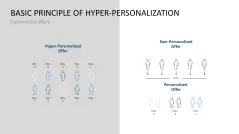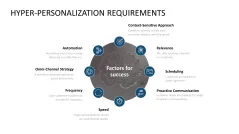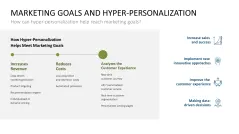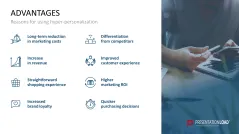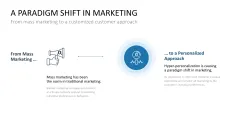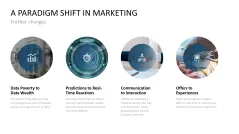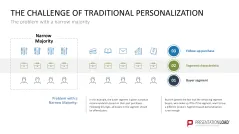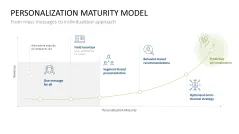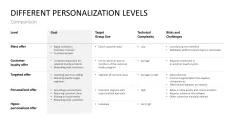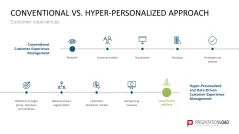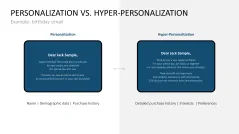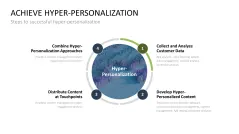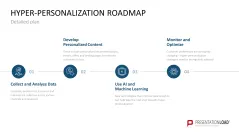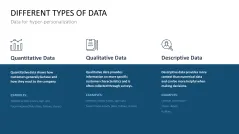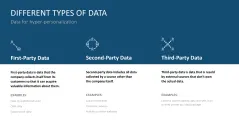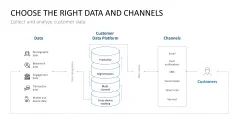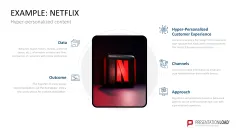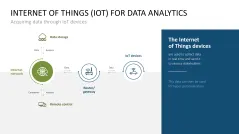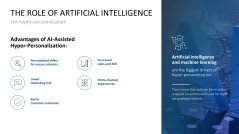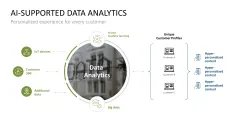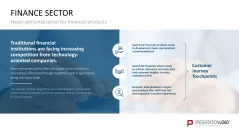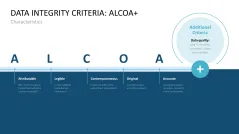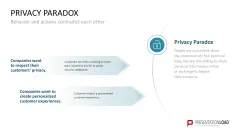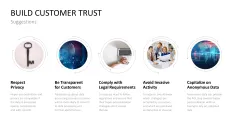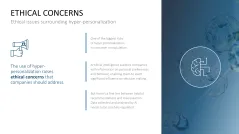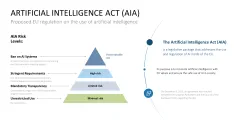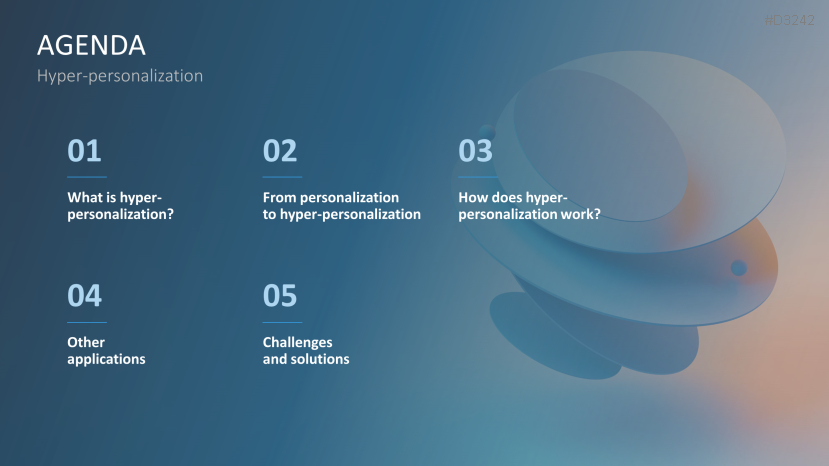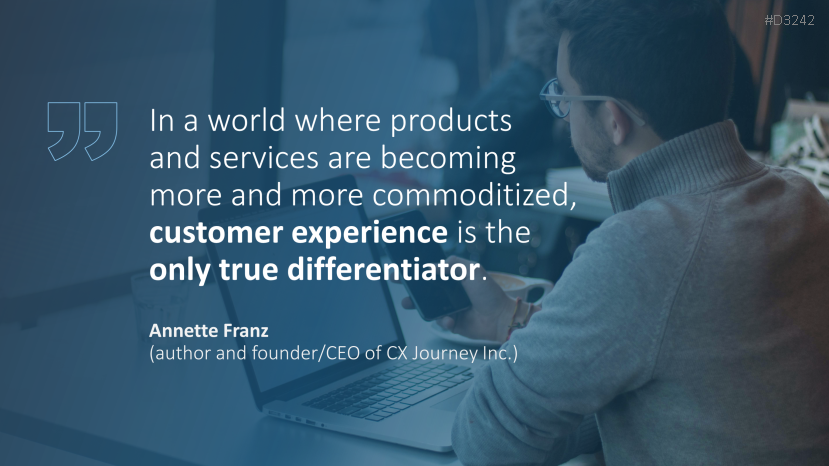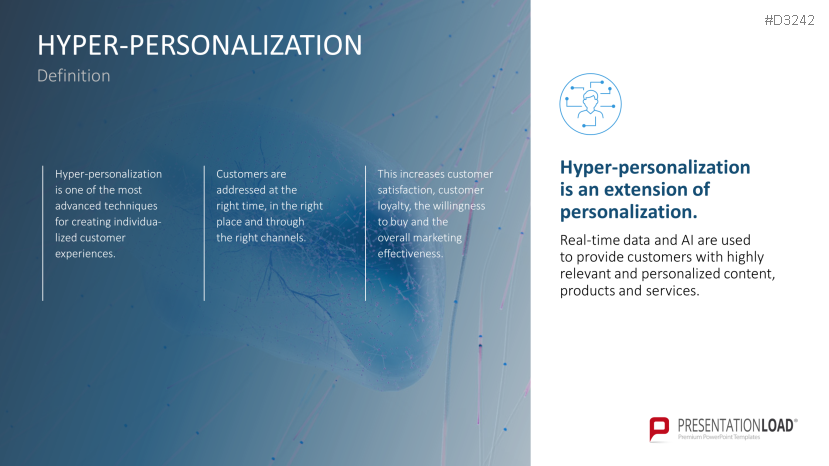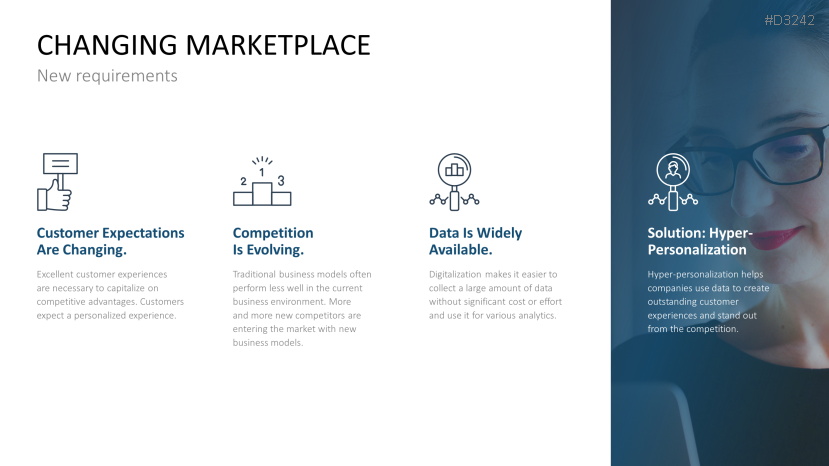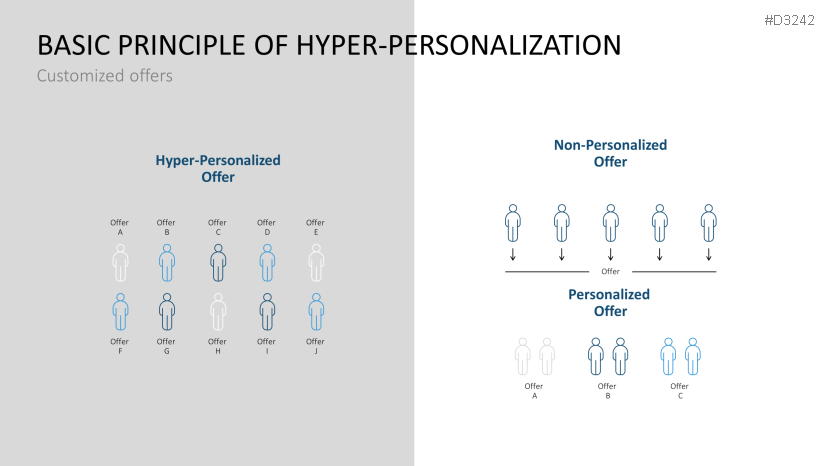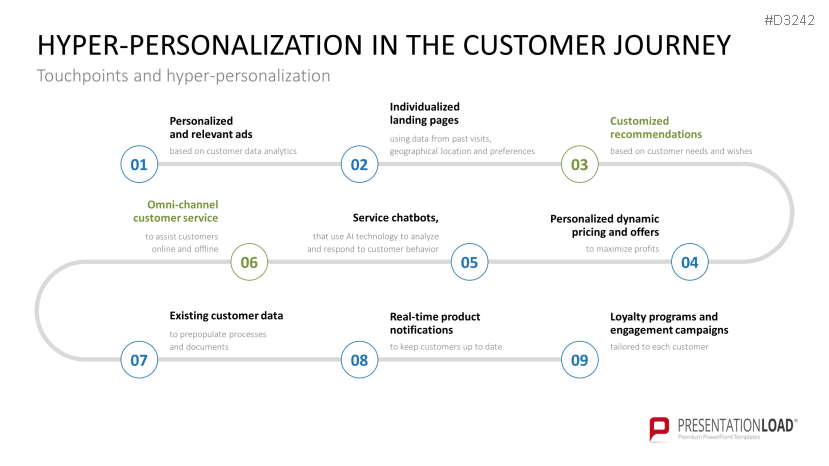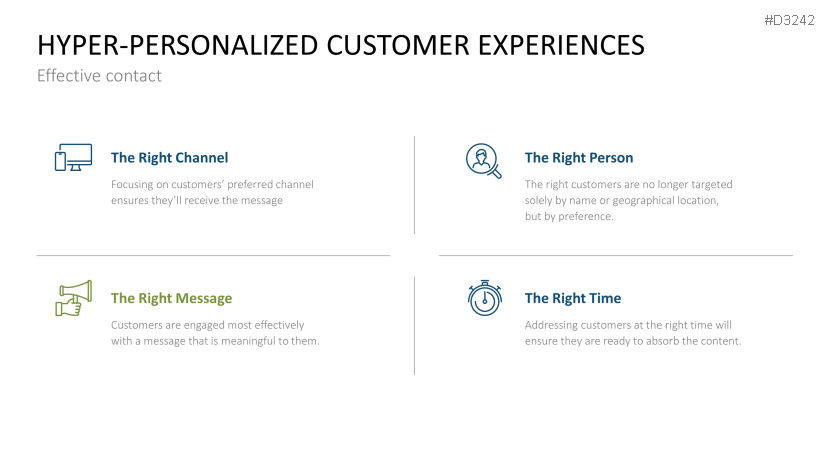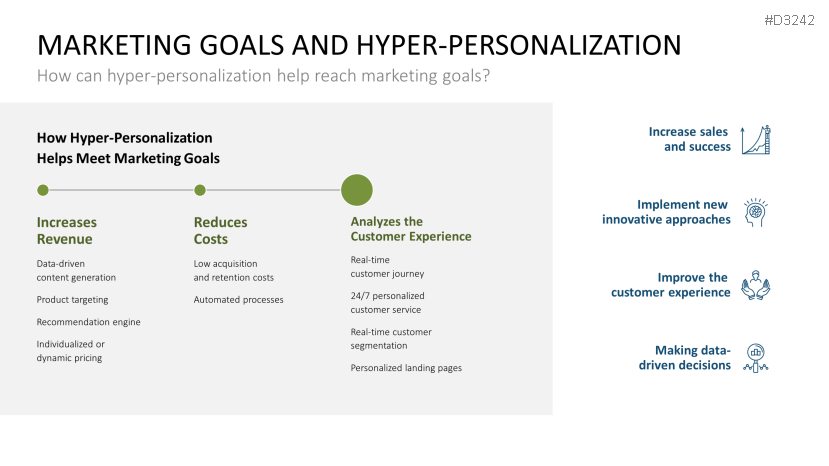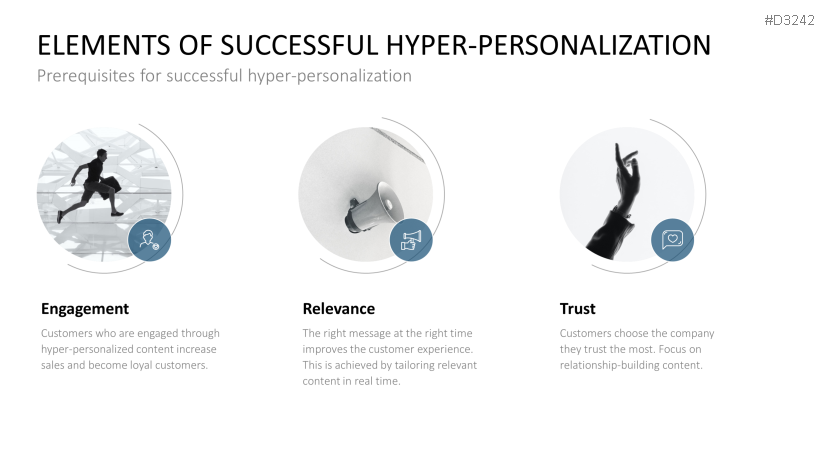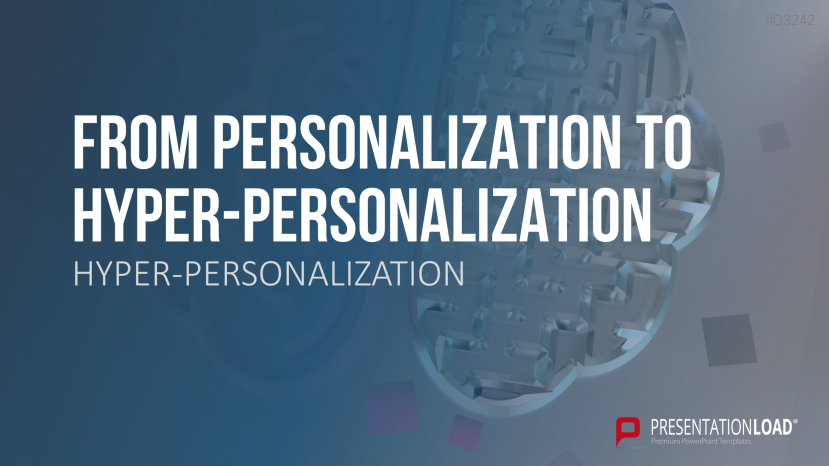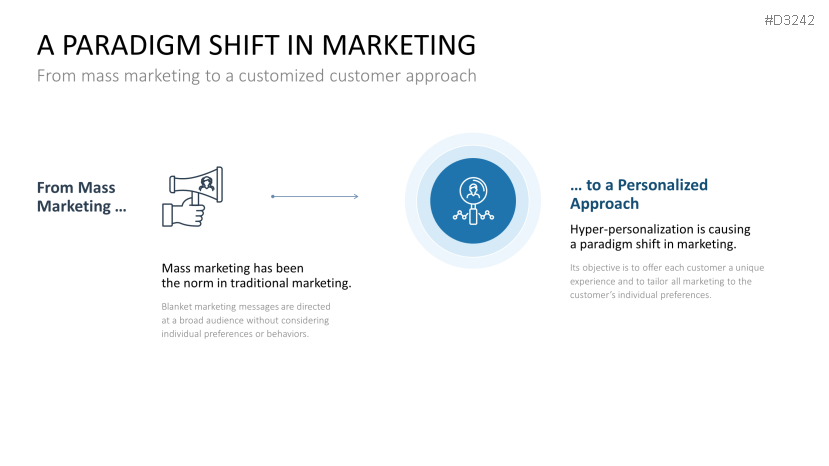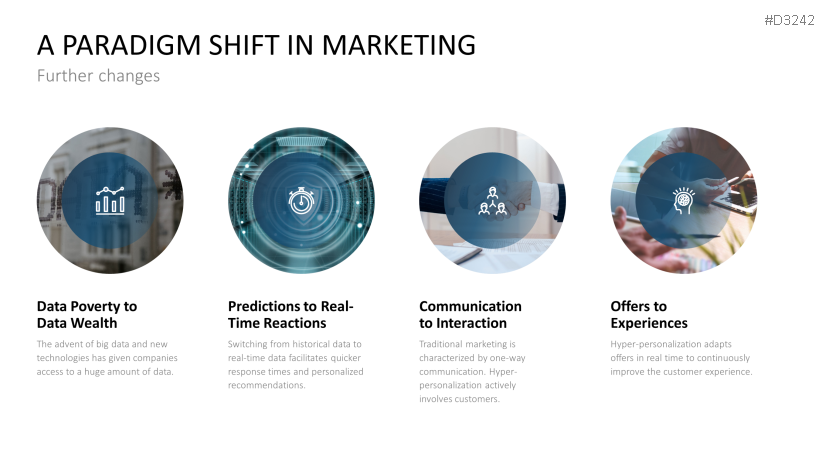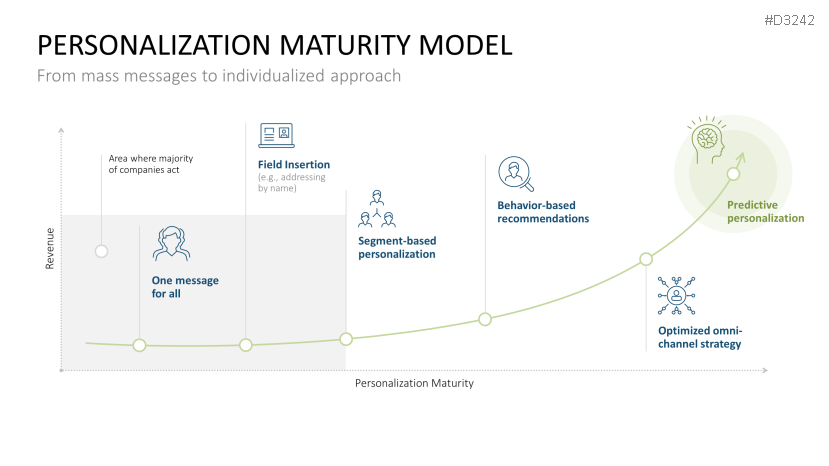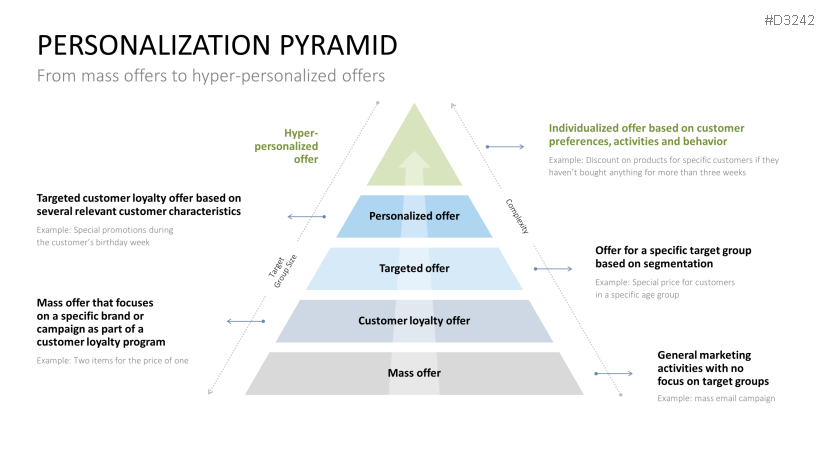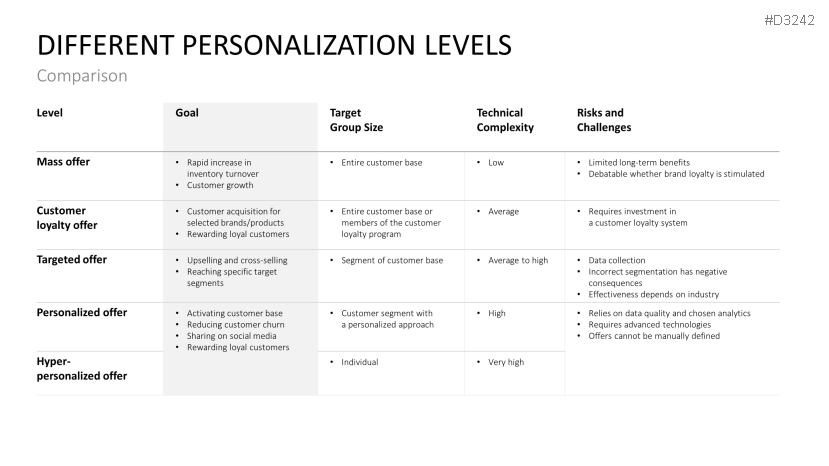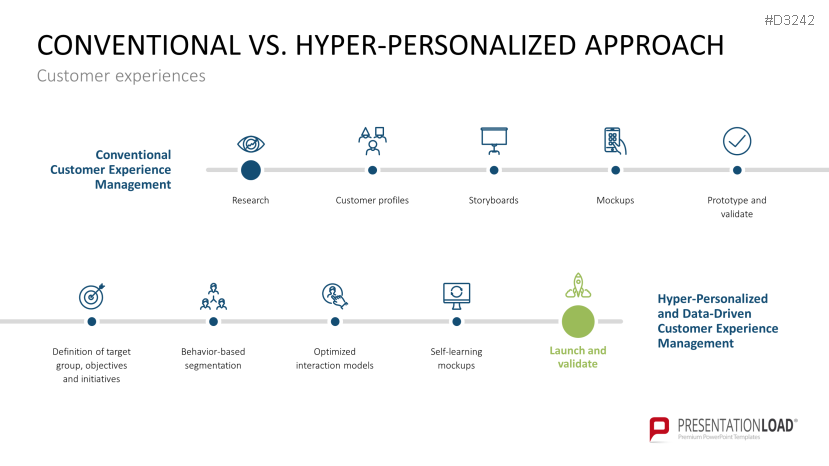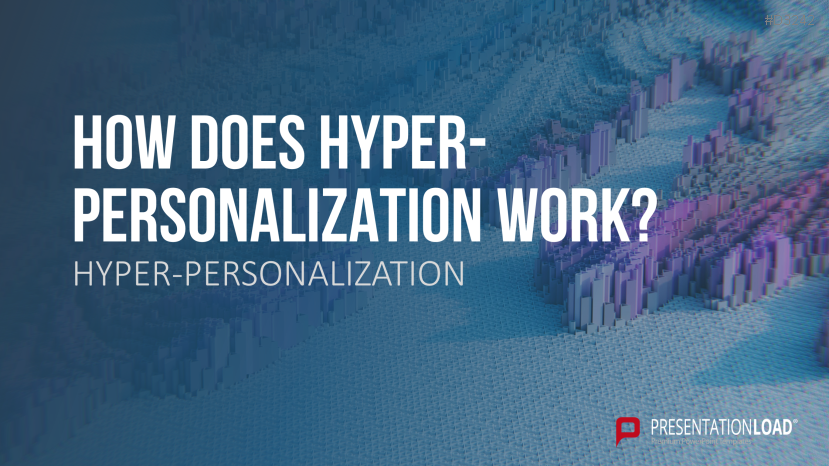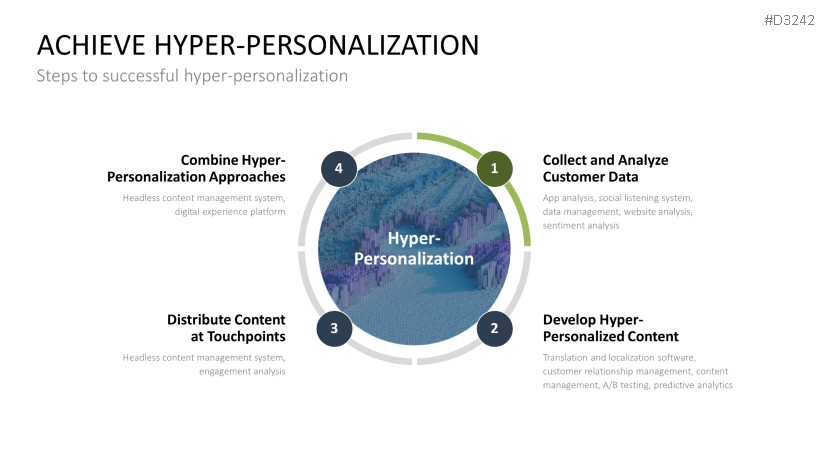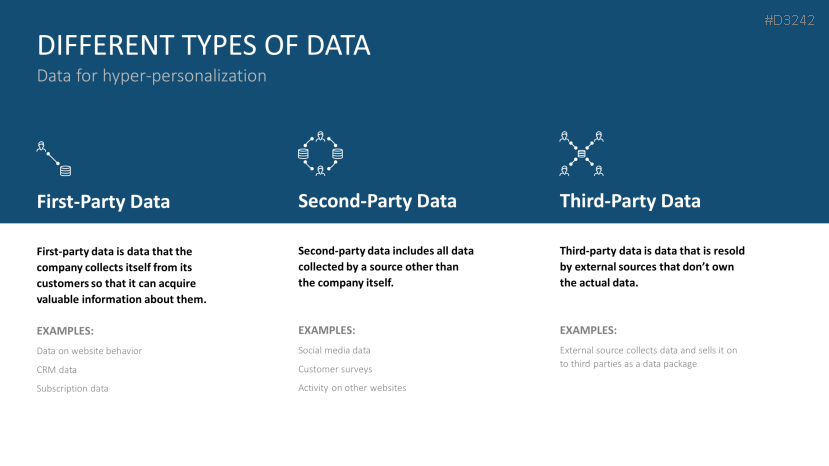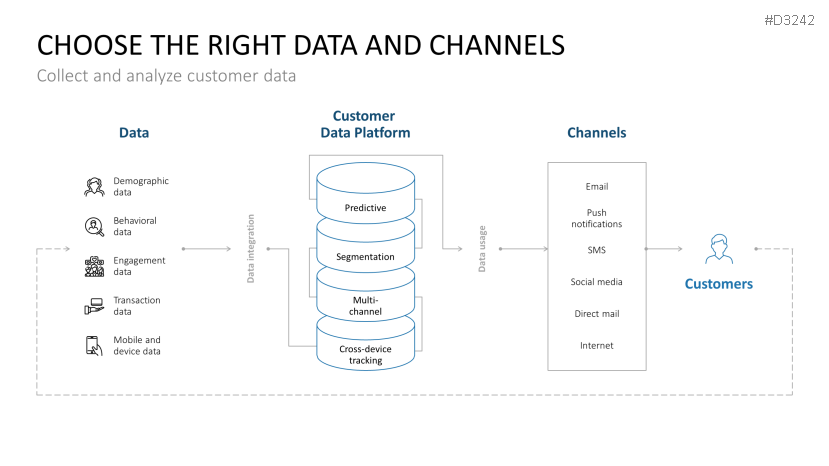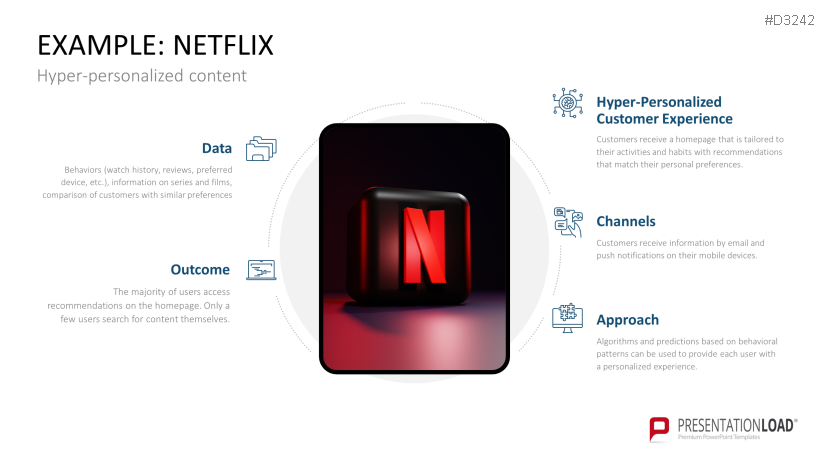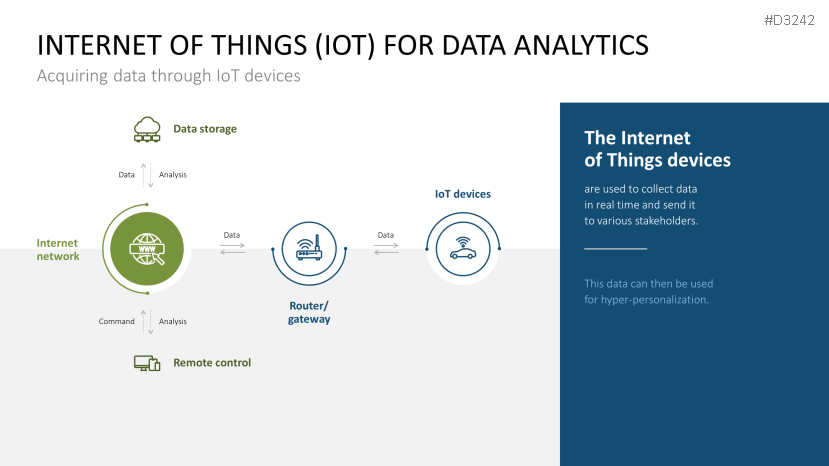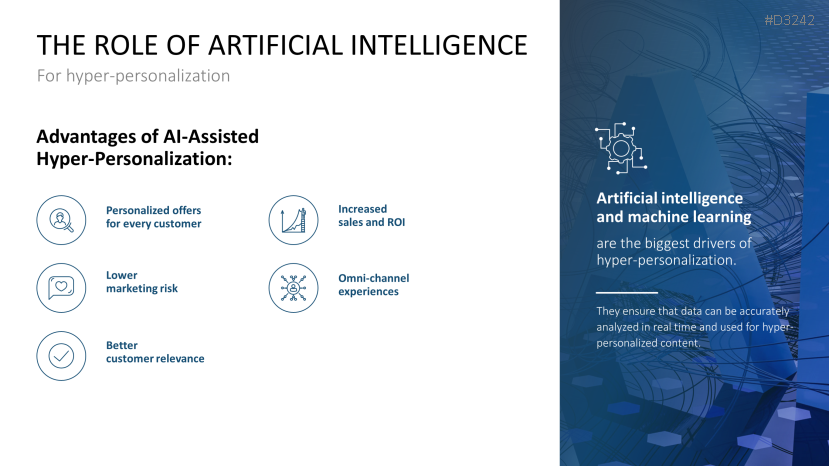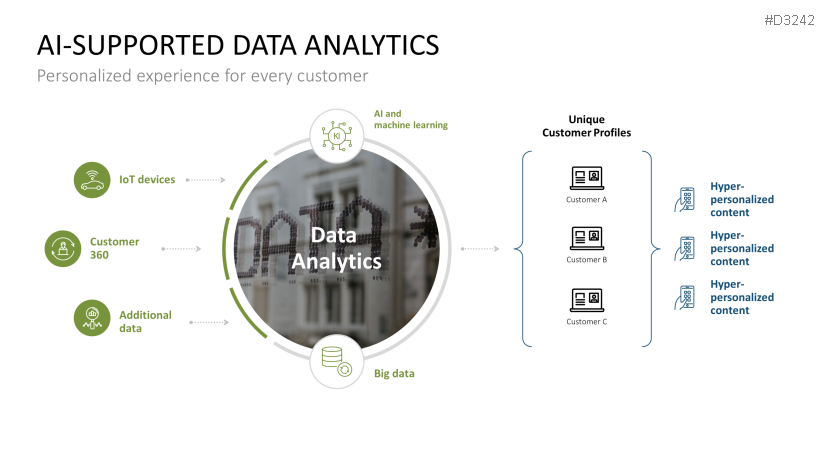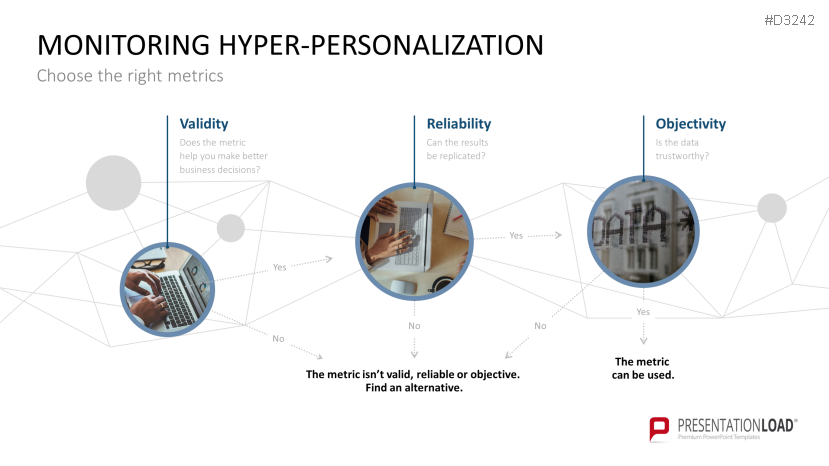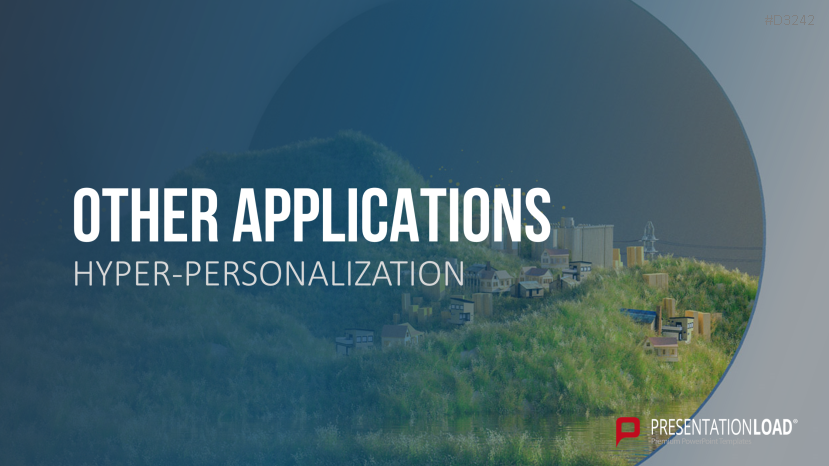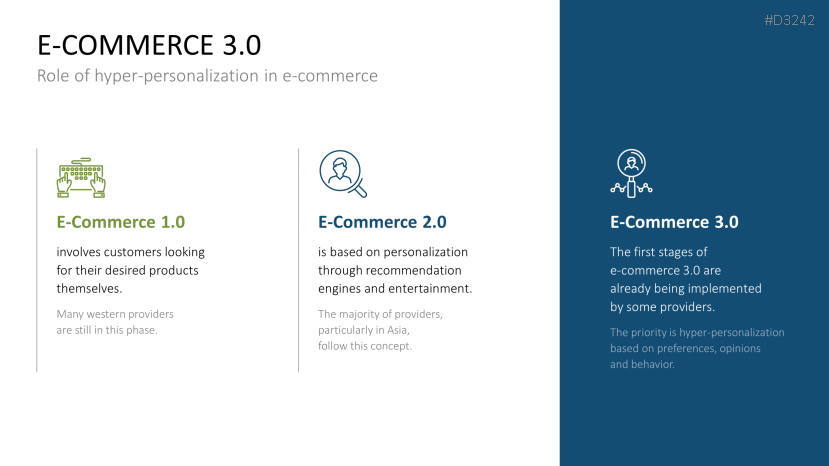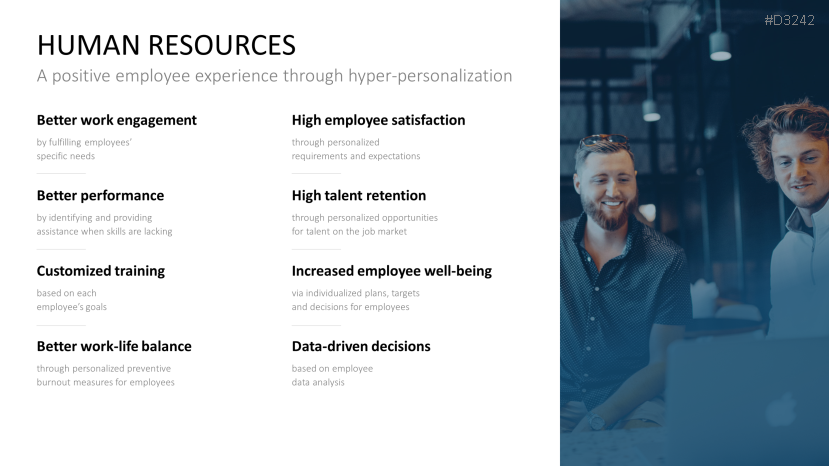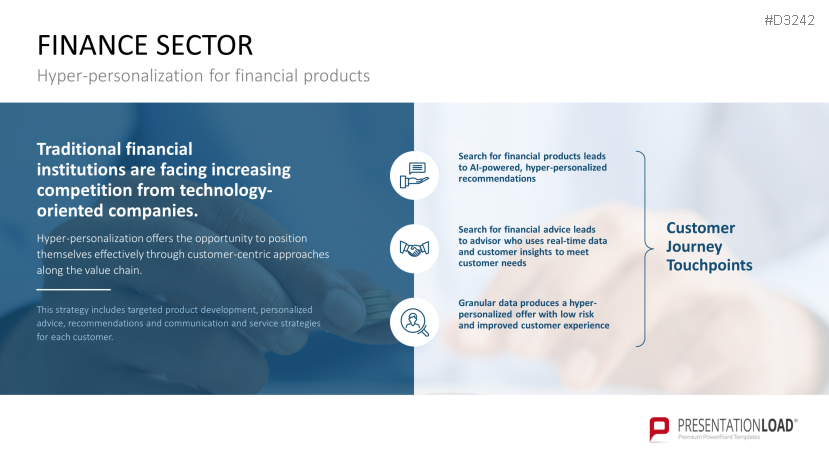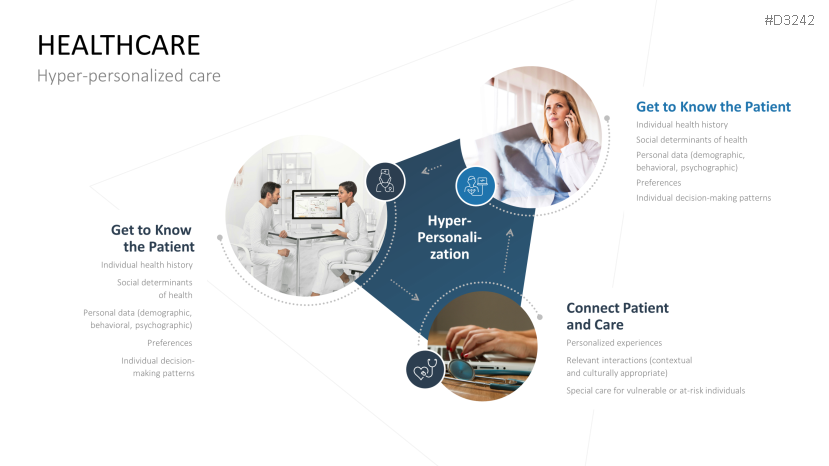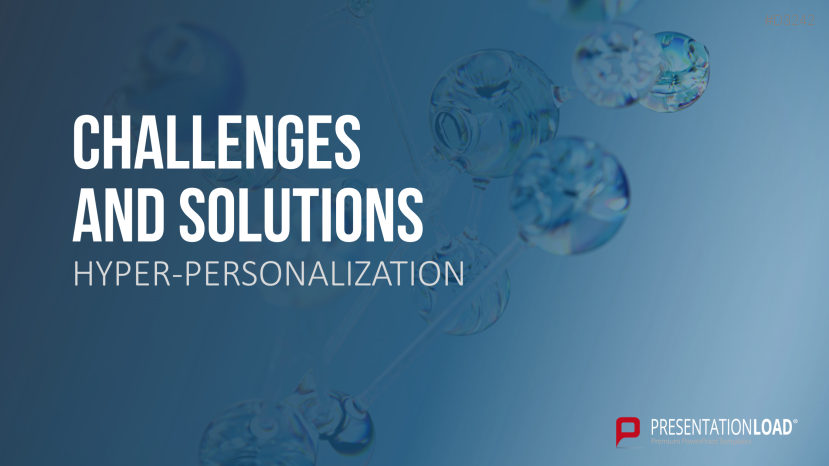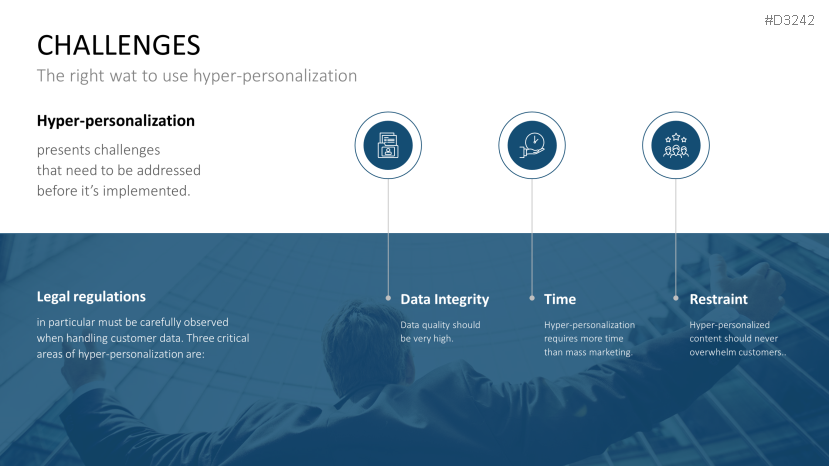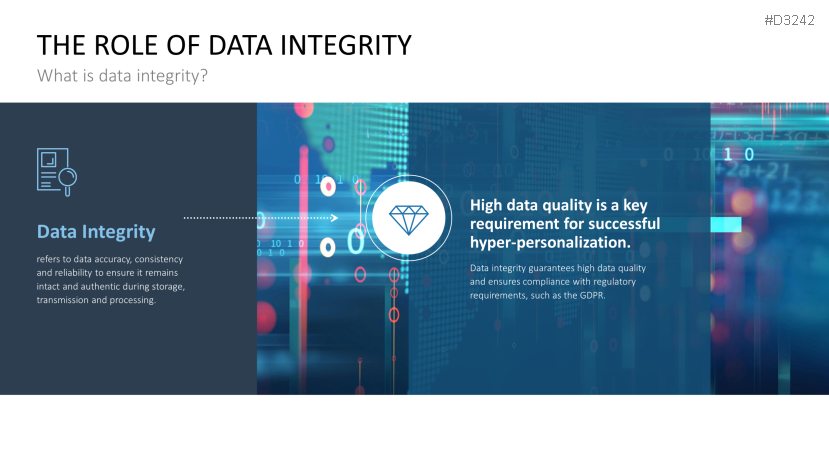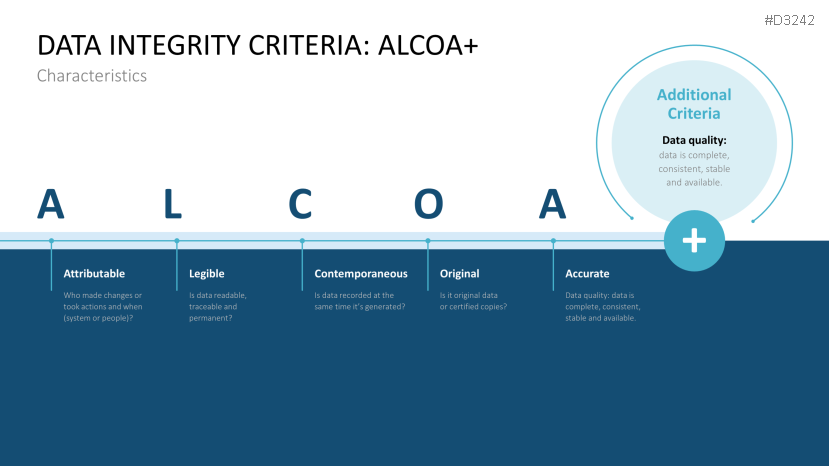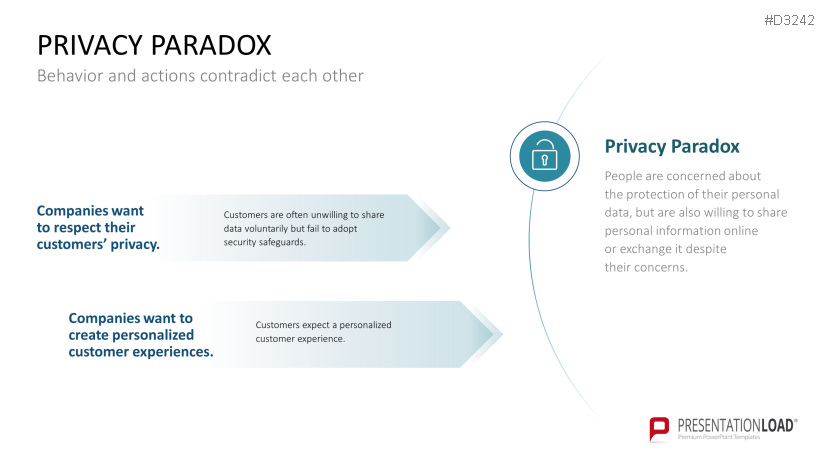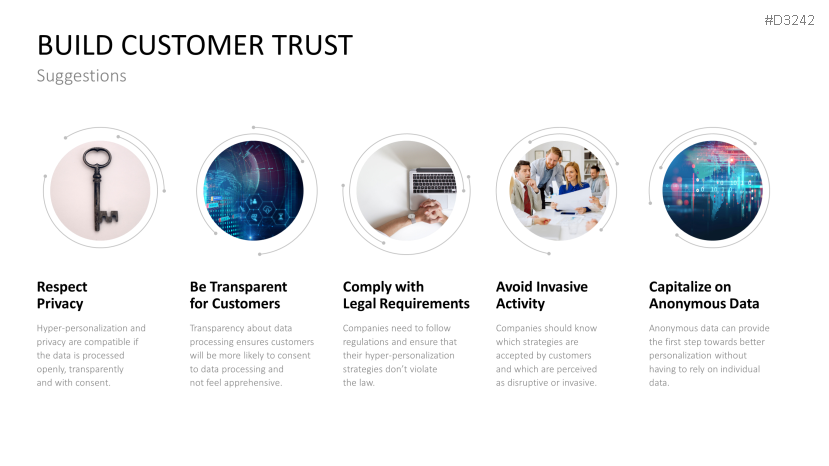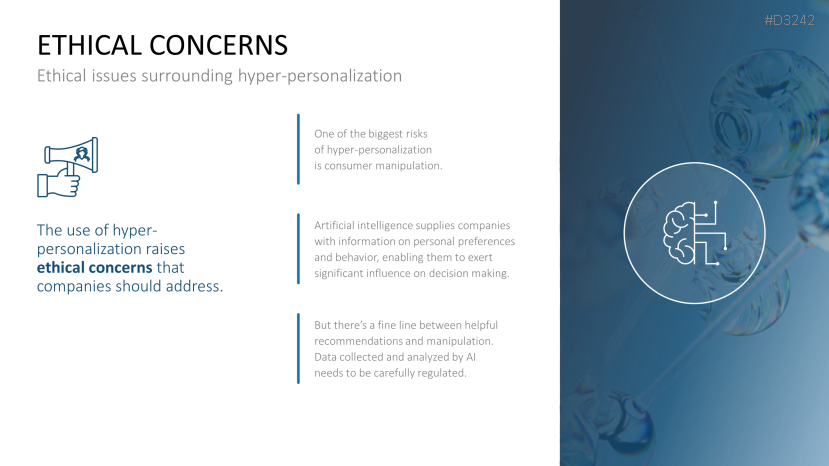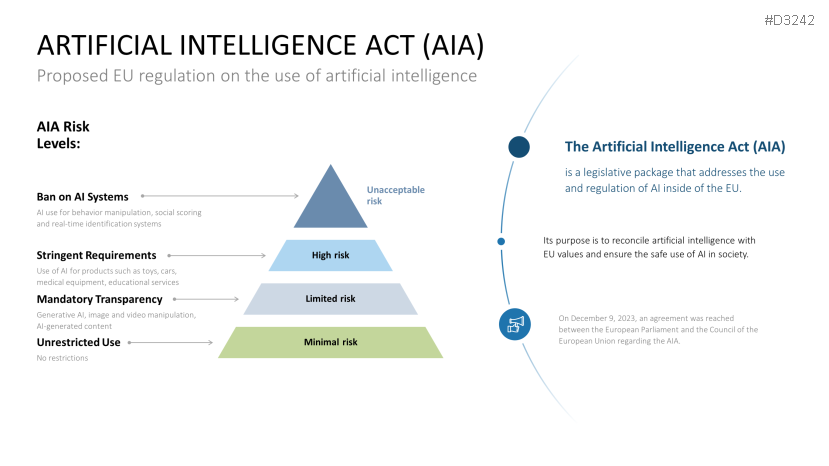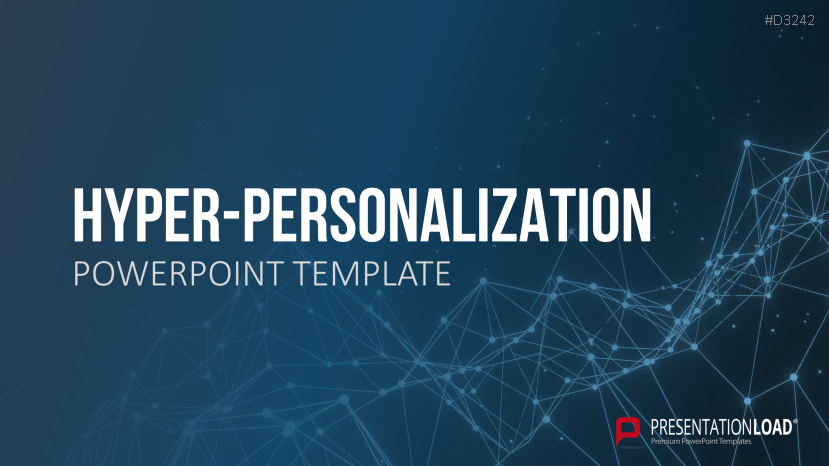
What is hyper-personalization?
Hyper-personalization is the next step in the evolution of traditional personalization. Real-time data and artificial intelligence are used to provide customers with relevant and tailored content, products and services. Hyper-personalization creates individualized customer experiences by addressing customers at the right time, in the right place and through the right channels. This not only increases customer satisfaction, but also enhances customer loyalty, their willingness to buy and as a result, the company’s long-term revenue. In a market where competition is continually growing and customers have ever higher expectations, hyper-personalization enables companies to obtain decisive competitive advantages.
A paradigm shift in marketing
Recent years have seen a paradigm shift in marketing: a move away from traditional mass marketing for a broad audience, toward an individualized approach with unique customer experiences. This development has become possible thanks to technological advances that facilitate collecting and analyzing an enormous amount of data at a relatively low cost and with minimal effort. This data enables real-time predictions and is transforming time-delayed communication between companies and customers into real-time interaction. Personalized and incomparable customer experiences are the focus. All of these developments have also supported the use of hyper-personalization in marketing.
The challenges of hyper-personalization
In addition to the technological challenges associated with the use of artificial intelligence and machine learning for hyper-personalization, there are also ethical concerns. Hyper-personalization gives companies a deep insight into their customers’ private information, including preferences and behaviors. This enables companies to strongly influence customer decision making, increasing the risk of consumer manipulation. Data quality also plays a crucial role. The effectiveness of hyper-personalization depends on the quality and integrity of the data provided. It’s crucial that companies strictly adhere to ethical principles and privacy policies to maintain customer trust while providing personalized services.
Everything on hyper-personalization in one template
With our new Hyper-Personalization PowerPoint template, you can give an impressive presentation on the basics, functions, applications and challenges of this marketing method. Use engaging graphics to visualize how hyper-personalization differs from traditional mass marketing and illustrate the critical role an individualized customer approach can play in your company’s success. Our professionally designed slides provide clear examples to illustrate the transition from personalization to hyper-personalization. They also illustrate potential applications that could be extremely valuable to your company. Our template will help you introduce your company to the concept of hyper-personalization and lay the foundation for a deeper understanding of this method.
With this PowerPoint template, you can
- present the basics and the significance of hyper-personalization.
- show potential applications in different industries.
- highlight the challenges of hyper-personalization and possible solutions.
This PowerPoint template includes:
- Quote
- What is hyper-personalization?
- Hyper-personalization: definition
- Changing marketplace
- Basic principle of hyper-personalization
- Hyper-personalization requirements
- Hyper-personalization in the customer journey
- Hyper-personalized customer experiences
- Marketing goals and hyper-personalization
- Elements of successful hyper-personalization
- Advantages
- From personalization to hyper-personalization
- A paradigm shift in marketing
- The problem with a narrow majority
- Personalization maturity model
- Personalization pyramid
- Comparison of personalization levels
- Conventional vs. Hyper-personalized approach
- Personalization vs. Hyper-personalization: example
- How does hyper-personalization work?
- Achieve hyper-personalization
- Hyper-personalization roadmap
- Different types of data
- Choose the right data and channels
- Example: Netflix
- Internet of things (IoT) for data analytics
- The role of artificial intelligence
- AI-supported data analytics
- Monitoring hyper-personalization
- Other applications
- E-commerce 3.0
- Human resources
- Finance sector
- Healthcare
- Educational technology
- Public sector
- Challenges and solutions
- The right way to use hyper-personalization
- The role of data integrity
- Data integrity criteria: ALCOA+
- Privacy paradox
- Build customer trust
- Ethical concerns
- Artificial Intelligence Act (AIA)






